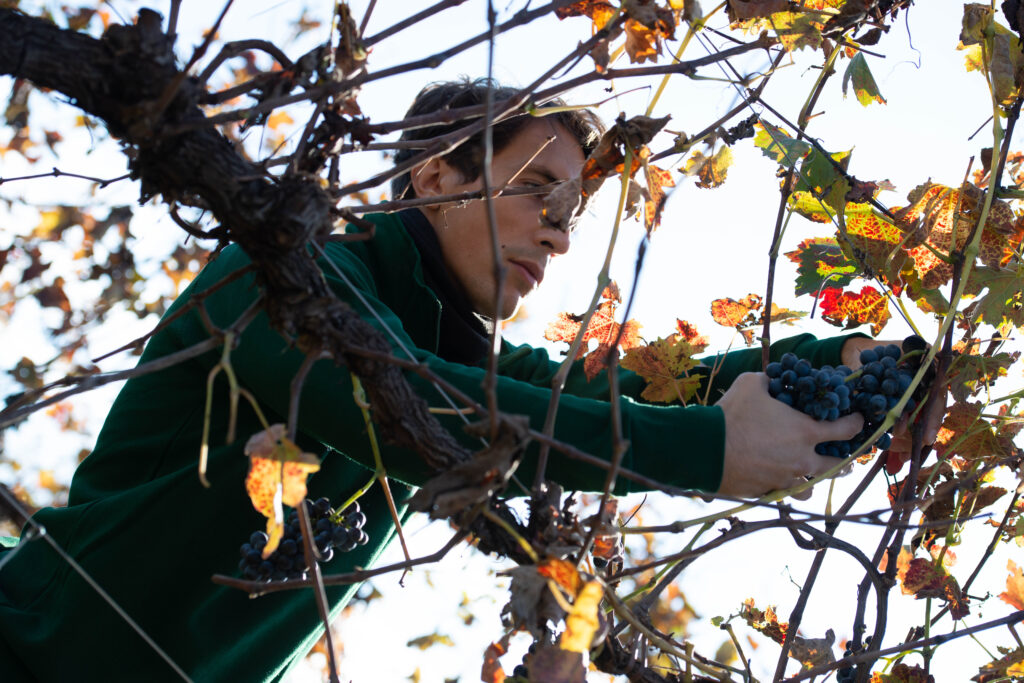Between the end of August and the end of October, wineries experience the busy and magical period of the harvest.
This is one of the most intense times of the year, but it is also the time when the sums of so many months of work in the countryside are drawn.
We would like to share some curiosities with you through the 8 interesting facts below. Enjoy your reading!
Eight interesting facts about harvest
How can you tell that the grapes are ready for harvest?
The time of harvest is determined, of course, by the ripeness of the grapes, but this is not the only factor to consider.
A useful tool for determining the state of ripeness of grapes are “ripening curves“. These are made as a result of grape samples of the same variety, taken at regular intervals in the weeks prior to harvest; they mainly describe their technological, phenolic and aromatic ripeness.
Technological ripeness is undoubtedly the most important of all, depicting the relationship between the sugars and acids contained in the grapes. As time passes, the ratio shifts in favor of sugars while acids decrease.
Phenolic ripening concerns the phenolic component of the grape, that is, the coloring substances and tannins (the latter in black grapes), while aromatic ripening has to do with the accumulation of aromatic substances in the berries.
Another factor that determines the start of the harvest is the type of grape harvested; in fact, some varieties are better suited to “early” harvests, while others reach their maximum expression if left to ripen on the vine for longer.
Last but not least, you should always take into account the winery goals, that is, the result you intend to achieve with your wine. For example, if you aspire to a fresh, ready-to-drink wine, the harvest will probably take place between late August and early September; while in cases of more structured, sweet or aromatically intense wines, you will wait until the following weeks.
Grape harvest: manual or mechanical?
The choice between the two methods is influenced, and sometimes imposed, by soil type; but not only that.
Manual harvesting is necessary under conditions of soil adversity, particularly when vines rise on steep slopes. This choice is also opted for when certain training systems are used, such as Bellussera.
Mechanical harvesting is usually used in the plains, when there is enough space between the rows and when the training systems allow it. This method is gaining popularity not only because new technologies do not damage the grapes, but also because of the cost benefits to wineries and the growing labor shortage.

How much time should elapse between harvesting and crushing?
As little time as possible!
The main risk is that naturally occurring yeasts will set off spontaneous, uncontrolled fermentations that could damage the grapes, reserving some nasty surprises at the winemaking stage. The time limit, however, depends on temperatures and on the health of the grapes: the higher the temperature and the less healthy the grapes, the sooner they need to be crushed and processed in the winery.
What is the perfect climate at harvest time?
Sunny and dry, with little rain, breezy and cool temperatures…the climate we all dream of!
In the last stage of ripening, temperature fluctuations between day and night are very important; this way the grapes concentrate more sugars in the pulp and more elegant aromatic substances in the skin of the berries.
What about the best time of day to harvest?
Generally in the morning: in the hottest hours, indeed, the risk that the grapes will spoil during the transport to the winery increases. Somebody also harvests at night, especially in areas where average temperatures are high.
Is grape selection done during harvest?
Yes, it is. In the case of hand harvesting you are able to make an evaluation at the time. With mechanical harvesting it is more difficult so if you notice that a vine is somehow damaged, the clusters are discarded beforehand.
Is climate change affecting the timing of harvest?
Yes, it is. The harvest today starts earlier than a few decades ago, precisely because the warm weather leads to earlier ripening of the bunches of grapes, which – in some cases as early as mid-August – are ready to be harvested.
What is late harvest?
As the name suggests, it is the harvest carried out after the classic harvest period, the one therefore that leaves the bunches of grapes drying on the vine.
The goal is to increase the sugar concentration within the berries, and in fact the wines made from it are mainly dessert wines (like icewines and the ones made from nobel rot grapes).

If you read up to this point…
Now you are a real harvest master!
If you are like us, perhaps this is not enough for you…
Keep up with us
Did you enjoy this article?
If you are curious about other secrets of the wine world, keep following our Diary, where we periodically post insights.
If you’re an enthusiast and want to receive the insights in advance, subscribe to our newsletter and follow the “Wine in Pills” column.